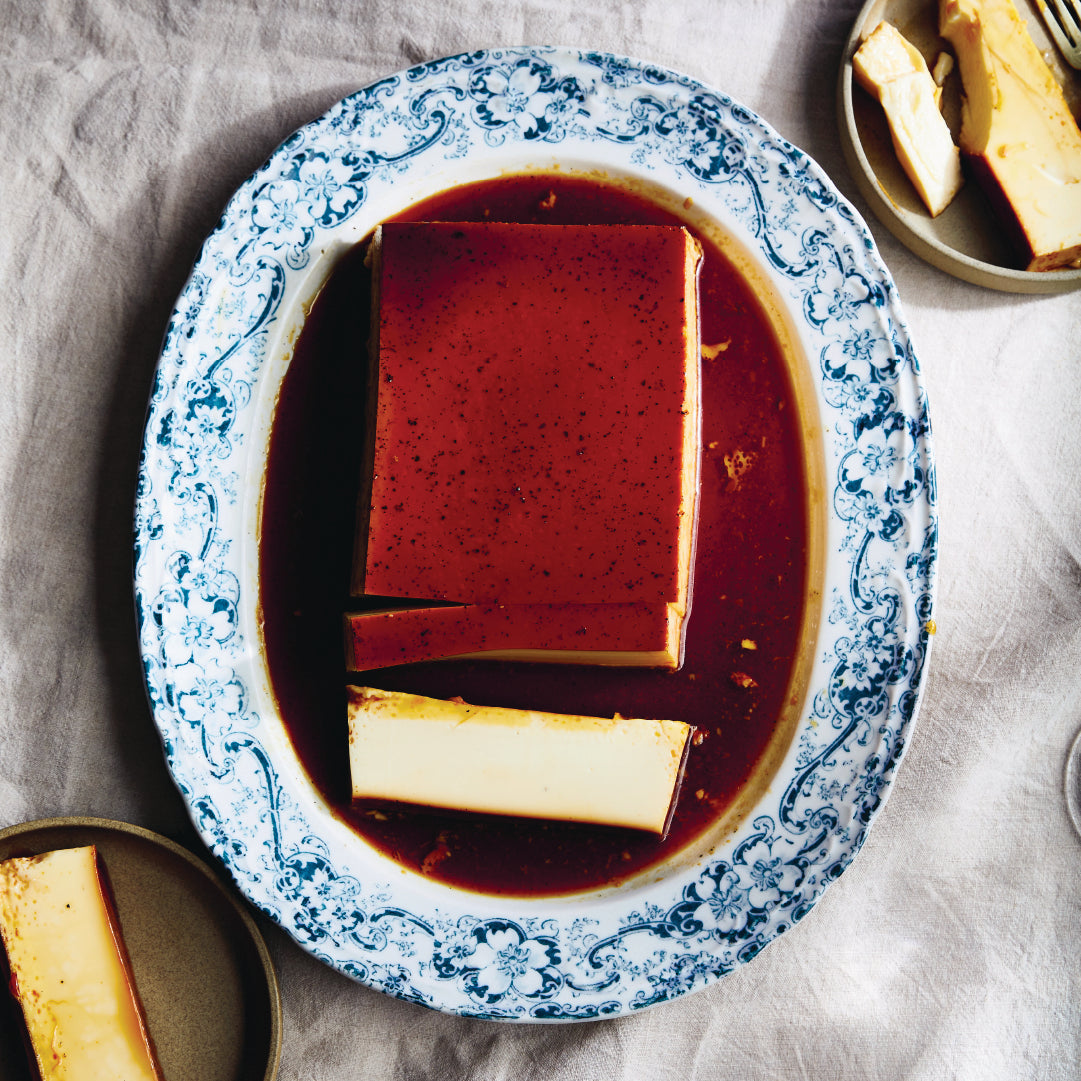
Valentine's Dinner Fit for a Foodie With 0% Alcohol Drinks
by Alister Stone
·
If you're looking for a delightful Valentine's Day spent in with your partner or friends, then 'Around the Table: Delicious Food for Every Day' Book by Julia Busuttil Nishimura is the perfect foodie edition for you. We've pulled out two of our favourite recipes that will make your night truly special. So, open up a bottle of non-alcoholic wine alternative NON1 Salted Raspberry & Chamomile or 0% alcohol drink NON7 Stewed Cherry & Coffee and get ready to impress.
STROZZAPRETI WITH
TINY MEATBALLS




METHOD
Warm the olive oil in a large frying pan over medium–low heat.
Add the shallot, parsley stalks and a good pinch of salt and gently
cook, stirring occasionally, for 10–12 minutes, until the shallot is soft
and just beginning to colour. Increase the heat to medium, pour in
the wine and scrape the base to lift any caramelised bits. Pour in the
tomatoes along with 200 ml of water, then scrunch in the bay leaves.
Season with salt and pepper and bring to a simmer. Reduce the heat
to medium–low and gently simmer the sauce for 30–40 minutes, until
slightly reduced and rich in colour.
Meanwhile, to make the strozzapreti, tip the tipo 00 flour onto a clean
work surface and mix with a large pinch of salt. Make a well in the
centre and slowly pour in 250 ml (1 cup) of warm water a little at a
time and use your hands to slowly bring the flour into the water in
a circular motion, then mix with your hands until the dough begins
to come together (a pastry scraper helps).
Knead for about 10 minutes, until smooth, adding a little more flour
if the dough is sticky. Once the dough begins to look smooth, it is
important that you clean your hands and work surface of any dry
dough. This will prevent the dough picking up flecks of dry dough
as you knead it. Cover the dough with an upturned bowl and set aside
for at least 30 minutes.
Roll out the dough on a lightly floured work surface until it is 2 mm
thick. You can also do this with a pasta machine. Just divide the dough
into four pieces and, working with one piece at a time, roll it out until
it reaches the desired thickness. Dust the dough with semolina flour,
then roll the short ends into the centre so they meet in the middle and
cut the dough into 6 mm wide strips. Unravel the dough strips, then
take one strip and hold the top section between your hands. Rub your
hands together to create a twisted, tubular shape, then pinch it o
with your fingers. Move the next piece of the strip into your palms and
repeat the twisting and pinching until the whole strip has been used
up. Arrange the strozzapreti on a clean tea towel dusted with semolina
flour and continue with the remaining dough.
To make the meatballs, combine all of the ingredients except the oil in
a large bowl. Roll the mixture into tiny meatballs, the size of hazelnuts.
Heat a large frying pan over high heat and add the olive oil. Working
in batches, cook the meatballs, shaking the pan to turn them over, for
about 3 minutes, until browned and mostly cooked through. Remove
with a slotted spoon and drain on a plate lined with paper towel. Add
the meatballs to the tomato sauce and stir though.
Cook the strozzapreti in a large saucepan of salted boiling water for
about 3 minutes, until chewy but not chalky. Drain the strozzapreti,
reserving 250 ml (1 cup) of the pasta cooking water. Add the
strozzapreti to the tomato sauce and meatballs, along with some
of the cooking water to help coat the pasta. Simmer the pasta and
sauce together for a few minutes until slightly thickened again,
and the meatballs are cooked through. Serve with plenty of grated
Parmigiano Reggiano or pecorino.
ESPRESSO
FLAN


METHOD
Preheat the oven to 150°C.
Warm the milk, cream and vanilla pod in a saucepan over medium
heat until hot, but not simmering.
Meanwhile, whisk together the sugar, eggs and vanilla seeds in
a large bowl. Try not to create too many bubbles or any froth.
Pour in the hot milk mixture a little at a time, whisking as you go.
Set aside.
To make the espresso caramel, place the sugar and 1 tablespoon
of water in a small saucepan over medium heat. Cook, swirling the
pan as needed, for 8–10 minutes, until a dark amber caramel forms.
Refrain from stirring the caramel with a spoon as it can tend to
crystallise. Pour in the espresso, taking care as it will spit, and swirl
the pan to combine.
Pour the caramel into the base of a 23 cm × 13 cm loaf tin and set
aside until the caramel has set. Strain the milk mixture through a fine
sieve onto the set caramel. Place the tin in a deep roasting tin and
pour enough boiling water into the roasting tin to come halfway up
the side of the flan to create a water bath. This will ensure a slower
and more even cook. Transfer to the oven and cook for 30 minutes.
Remove the tin from the water bath and let it cool completely.
Transfer to the fridge and chill for 2 hours.
To serve, dip the tin into a tray filled with boiling water for
30 seconds, then run a knife around the edges of the flan.
Invert the flan onto a serving plate and serve immediately.